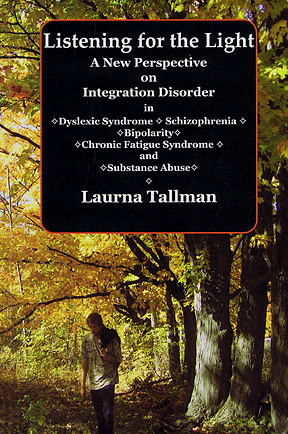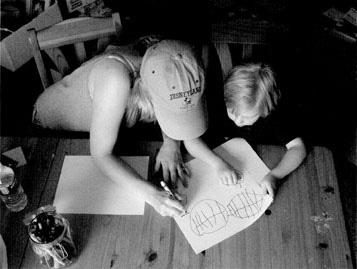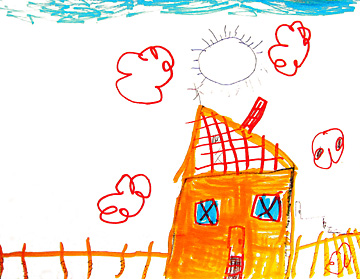|
Weeklong Summer Residential Workshops A weeklong residential program in Addison, Maine is open to small groups (4-8), June-September. Workshop participants will have the use of a classic 1870 farmhouse with 3 bedrooms and 3 full baths, kitchen, laundry, front porch, sunroom, ample parking, with views of the West River, Crowley Island, and blueberry land. The daily Drawing/Writing workshops will be held in the owner’s/teacher’s barn, which is also on the property. Workshops will run from 9-1 for five days. Afternoons and evenings are free.
Workshops may also be available at my home in Glen Ridge, New Jersey, October through May. These workshops will not be residential. To discuss dates and arrangements: susan.sheridan9@gmail.com, or by cell phone: 413-374-8444. I look forward to sharing the joys of Drawing/Writing with you!
1 Comment
Children love to draw. This is not a new idea! But the deep understanding that drawing can be used throughout the educational process with powerful emotional, attentional and academic success is still new.
The free downloadable handbook on this website (The Thinking Child) provides an easy way for parents (including homeschooling parents), and other caregivers, (including grandparents and nannies), to add a drawing component to children’s lives. There are many benefits to frequent drawing: increased self-esteem, longer attention spans, a quieter mind, more enthusiastic reading and writing skills, a general boost in fluency in speaking and thinking. Sustained visual attention (analogous to the self-focusing optical phenomena that occurs when photons propagate inside microtubules) achieved by marks of meaning has quantum effects within the noisy, thermal and chaotic intercellular milieu of the thinking brain. Click here to read more about Dr. Sheridan's Quantum Theory of Scribbling.
Younger Americans are typing or texting more and writing less, even in school -- and that's a problem when it comes to brain development
Posted on October 6, 2010, at 12:59 PM in The Week Nikki and Parker, HandMade Marks, 2010.With the ubiquity of keyboards large and small, neither children nor adults need to write much of anything by hand. That's a big problem, says Gwendolyn Bounds in The Wall Street Journal. Study after study suggests that handwriting is important for brain development and cognition -- helping kids hone fine motor skills and learn to express and generate ideas. Yet the time devoted to teaching penmanship in most grade schools has shrunk to just one hour a week. Is it time to break out the legal pad? Here's a look at how the brain and penmanship interact: Writing by hand can get ideas out faster University of Wisconsin psychologist Virginia Berninger tested students in grades 2, 4, and 6, and found that they not only wrote faster by hand than by keyboard -- but also generated more ideas when composing essays in longhand. In other research, Berninger shows that the sequential finger movements required to write by hand activate brain regions involved with thought, language, and short-term memory. Writing increases neural activity A recent Indiana University study had one group of children practice printing letters by hand while a second group just looked at examples of A's, B's, and C's. Then, both groups of kids entered a functional MRI (disguised as a "spaceship") that scanned their brains as the researchers showed them letters. The neural activity in the first group was far more advanced and "adult-like," researchers found. Good handwriting makes you seem smarter Handwriting also affects other people's perceptions of adults and children. Several studies have shown that the same mediocre essay will score much higher if written with good penmanship and much lower if written out in poor handwriting, says Vanderbilt University education professor Steve Graham. "There is a reader effect that is insidious," he says. "People judge the quality of your ideas based on your handwriting." And the consequences are real: On standardized tests with handwritten sections, like the SAT, an essay deemed illegible gets a big zero. This isn't only an English-language phenomenon Chinese and Japanese youths are suffering from "character amnesia," says AFP's Judith Evans. They can't remember how to create letters, thanks to computers and text messaging. In China, the problem is so prevalent, there's a word for it: "Tibiwangzi", or "take pen, forget character." "It's like you're forgetting your culture," says Zeng Ming, 22. So closely are Chinese writing and reading linked in the brain, says Hong Kong University linguist Siok Wai Ting, that China's reading ability as a nation could suffer. New technology is part of the solution New touch-screen phones and tablets, like the iPhone and iPad, are providing a countervailing force, translating handwriting into digital letter forms or making writing practice fun (a $1.99 iPhone app called "abc PocketPhonics" rewards kids with "cheering pencils"). In Japan, an iPhone game called kanji kentei -- a character quiz with 12 levels -- has become a hit with all age groups. Science may just be catching up with common sense Heather Horn in The Atlantic Wire says that while all this research is fascinating, it mostly shows that "scientists are finally beginning to explore what writers have long suspected." She notes a 1985 article in the Paris Review in which the interviewer asks novelist Robert Stone if he mostly types his manuscripts. His reply: "Yes, until something becomes elusive. Then I write in longhand in order to be precise. On a typewriter or word processor you can rush something that shouldn't be rushed -- you can lose nuance, richness, lucidity. The pen compels lucidity." Sources: Wall Street Journal, The Atlantic Wire, AFP/Reuters I asked my almost 7-year old grandson, Nate, to read aloud to me. He did not want to. I thought, well, maybe he would like to write a story and read that to me. So, I folded and stapled some sheets of paper together to make a "book." Nate started copying, all on his own, from a little book he had chosen for us to read. As he copied the words from the book to a page in his book, he said the words out loud, phonetically, and also spelled them aloud as he wrote. He left spaces to copy the book's illustrations on each page. Nate's natural method combines copying, speaking, writing, reading, and drawing, all in one integrated motion. It gives the child a lovely lot of work to do, with no pressure. Nate invented this method of COPYING/SPEAKING/READING/WRITING/DRAWING. I recommend it. It takes all the pressure off the child to invent a story and write about it if he is not ready to do this. The pressure to read and write too young, especially in connection with boys, is back-firing. Nate showed his granny how to do this at child-speed-and-way.
|
Author:Dr. Susan Sheridan is an artist, writer, parent and teacher. Archives
May 2016
Categories |



 RSS Feed
RSS Feed